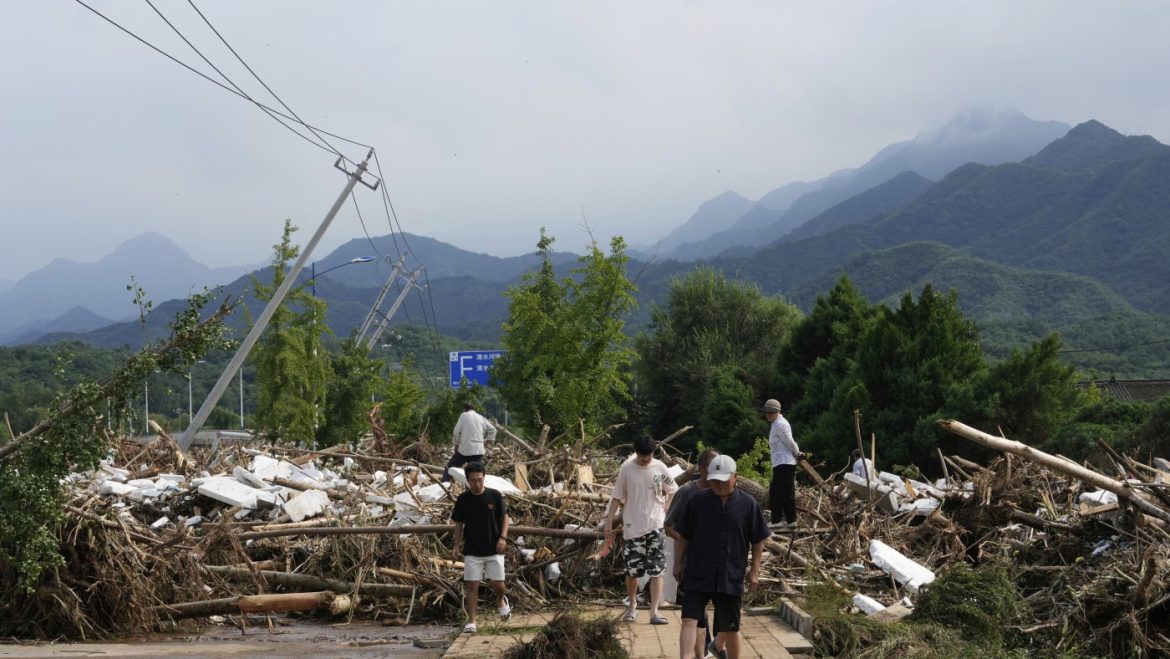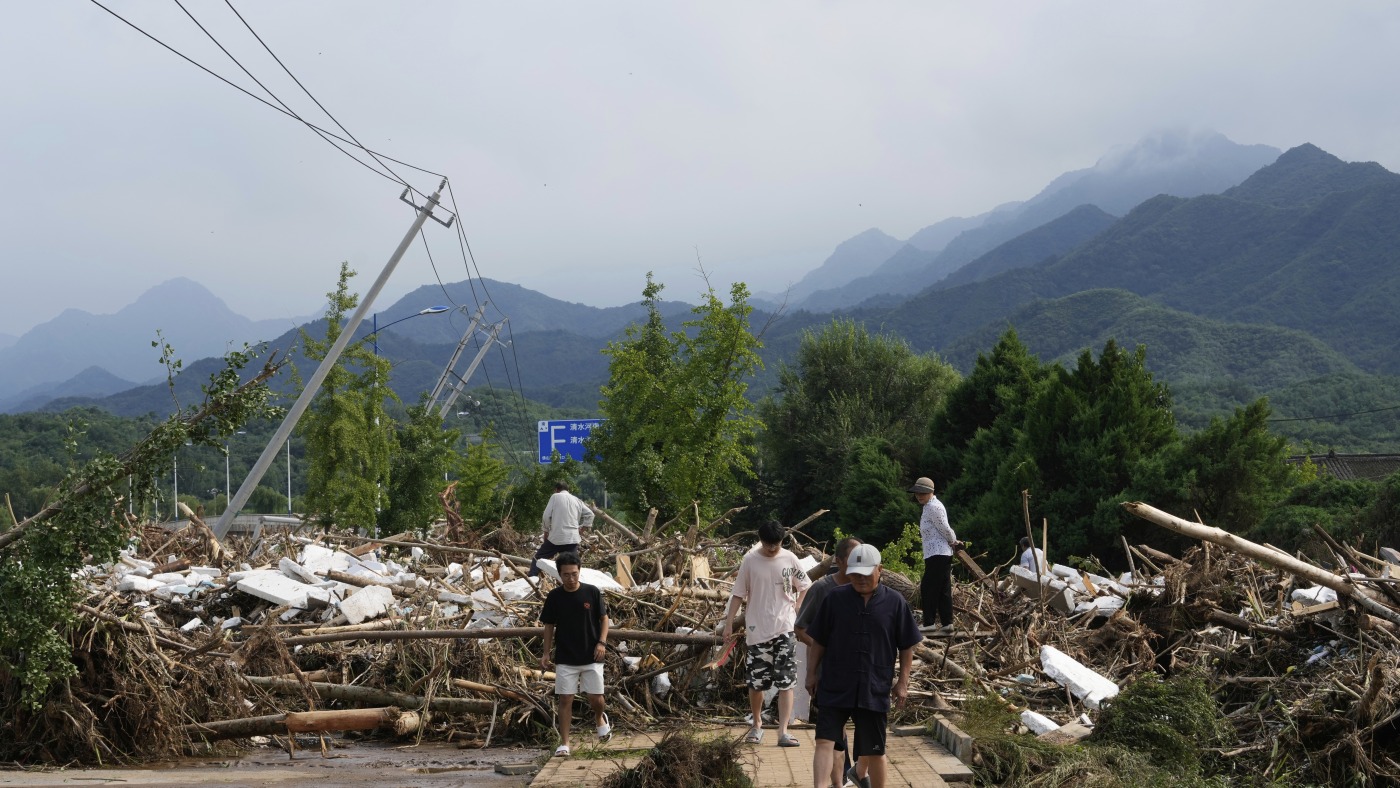The Devastating Floods in Beijing: A Call for Resilience and Climate Action
A City Under Water
The recent floods in Beijing have left an indelible mark on the city and its inhabitants. The torrential rains that swept through the region have caused unprecedented destruction, claiming at least 34 lives and displacing over 80,000 people. The scale of the disaster is a stark reminder of the vulnerability of urban centers to extreme weather events. The floods have not only highlighted the immediate human cost but also raised critical questions about infrastructure resilience, disaster preparedness, and the long-term impacts of climate change.
The Unprecedented Rainfall and Its Devastating Impact
The primary cause of the Beijing floods was an extraordinary amount of rainfall. In some areas, the region received nearly a year’s worth of rain within a few days. This deluge overwhelmed the city’s drainage systems, leading to rivers bursting their banks and widespread flooding. The sheer volume of water was too much for the existing infrastructure to handle, resulting in catastrophic consequences.
The impact of the floods was multifaceted. Beyond the tragic loss of life, the flooding caused significant damage to infrastructure. Power outages affected more than 130 villages, communication lines were disrupted, and over 30 sections of road were damaged. The destruction of infrastructure not only hindered rescue and relief efforts but also posed long-term challenges to the region’s recovery. The damage inflicted on agricultural lands and livestock could lead to food shortages and economic hardship for the affected communities.
The Human Cost and Displacement
The human cost of the Beijing floods is immeasurable. Families have lost loved ones, homes have been destroyed, and livelihoods have been disrupted. The relocation of over 80,000 people underscores the scale of the displacement. Many of these evacuees now face an uncertain future, unsure of when they can return to their homes or how they will rebuild their lives. The psychological impact of such a traumatic experience can be profound and long-lasting, requiring extensive mental health support for the affected population.
The Miyun district, a rural area northeast of Beijing, appears to have been particularly hard-hit, with a significant number of fatalities and evacuations reported. This highlights the vulnerability of rural communities to extreme weather events, often due to inadequate infrastructure and limited access to resources.
Disaster Management and Preparedness
The Beijing floods raise critical questions about disaster management and preparedness. While China has made significant strides in economic development, its ability to cope with extreme weather events remains a challenge. Some reports hint at the strain on the capital’s disaster management capabilities, suggesting that existing systems were unable to handle the sheer magnitude of the crisis.
Effective disaster management requires a multi-pronged approach, including:
Early Warning Systems
Accurate and timely weather forecasts are crucial for providing advance warning to vulnerable populations, allowing them to evacuate and take necessary precautions. Investing in advanced meteorological technology and improving communication channels can enhance the effectiveness of early warning systems.
Infrastructure Resilience
Investing in robust infrastructure, including drainage systems, flood defenses, and resilient power grids, is essential for mitigating the impact of extreme weather events. Upgrading existing infrastructure and implementing innovative solutions, such as permeable pavements and green roofs, can help reduce the risk of flooding.
Emergency Response Capacity
Well-trained emergency response teams, equipped with the necessary resources and equipment, are vital for conducting search and rescue operations and providing assistance to affected communities. Strengthening emergency response capabilities through regular training, drills, and investment in modern equipment can improve the effectiveness of disaster response efforts.
Public Awareness and Education
Raising public awareness about disaster risks and promoting preparedness measures can empower individuals and communities to take proactive steps to protect themselves. Educating the public about the importance of having emergency kits, knowing evacuation routes, and understanding basic first aid can enhance community resilience.
Climate Change and the Future
While attributing any single weather event solely to climate change is complex, the increasing frequency and intensity of extreme weather events around the world are consistent with the predicted impacts of a changing climate. Rising global temperatures are leading to more intense rainfall, prolonged droughts, and more frequent heatwaves.
The Beijing floods serve as a stark reminder of the urgent need to address climate change. Reducing greenhouse gas emissions and transitioning to a low-carbon economy are essential steps for mitigating the risks of future extreme weather events. In addition, investing in climate adaptation measures, such as improving infrastructure resilience and developing drought-resistant crops, is crucial for protecting vulnerable communities from the impacts of climate change.
Lessons Learned and the Path Forward
The Beijing floods offer valuable lessons for policymakers, urban planners, and communities alike. These lessons include:
The Importance of Integrated Risk Management
A holistic approach to risk management, encompassing prevention, preparedness, response, and recovery, is essential for building resilience to extreme weather events. Integrated risk management involves coordinating efforts across different sectors, including government agencies, private sector entities, and community organizations, to ensure a comprehensive and effective response to disasters.
The Need for Sustainable Urban Development
Rapid urbanization can exacerbate flood risks if not accompanied by adequate investment in infrastructure and sustainable land-use planning. Sustainable urban development involves creating compact, walkable communities with mixed land uses, green spaces, and efficient public transportation systems. These features can help reduce the risk of flooding and enhance the overall resilience of urban areas.
The Power of Community Engagement
Empowering local communities to participate in disaster preparedness and response efforts can enhance their resilience and reduce their vulnerability. Community engagement involves involving residents in the planning and implementation of disaster risk reduction measures, as well as providing them with the necessary resources and support to take action. By fostering a sense of ownership and responsibility, communities can become more proactive in addressing disaster risks.
A Wake-Up Call for a Changing World
The heavy rains and flooding in Beijing are more than just a local tragedy; they are a stark reminder of the increasing vulnerability of our world to extreme weather events. The images of flooded streets, displaced families, and the heartbreaking loss of life should serve as a wake-up call, urging us to take immediate and decisive action to address climate change and build more resilient communities. The future depends on our collective commitment to creating a safer, more sustainable world for all.


